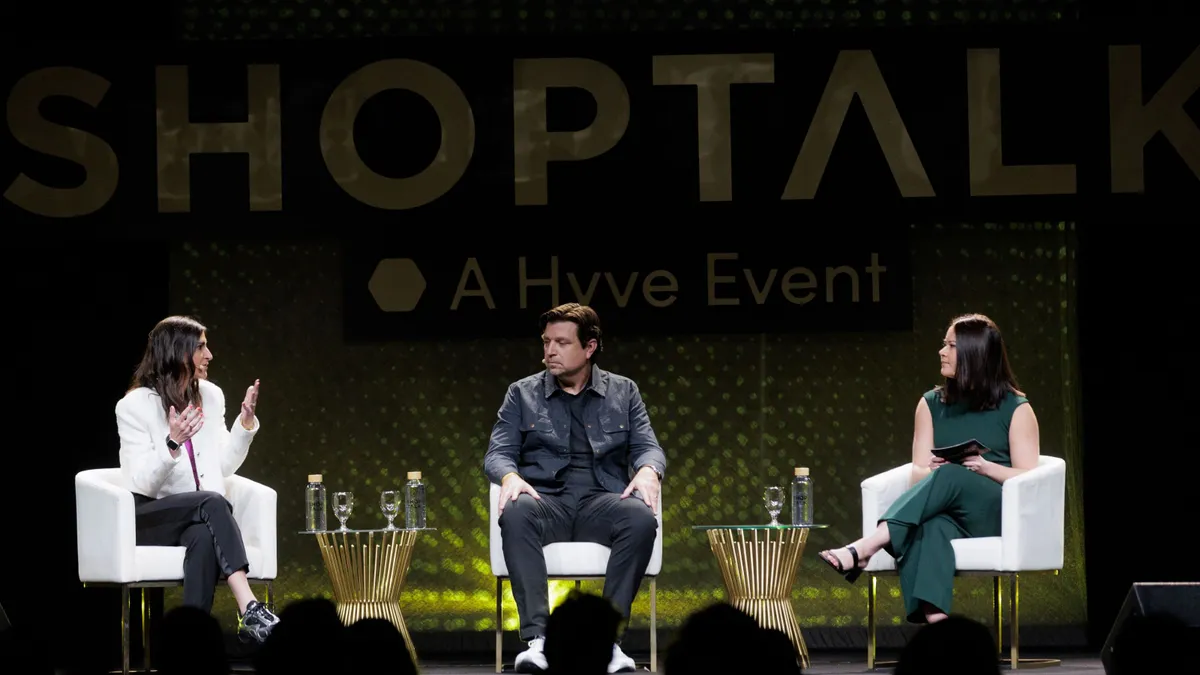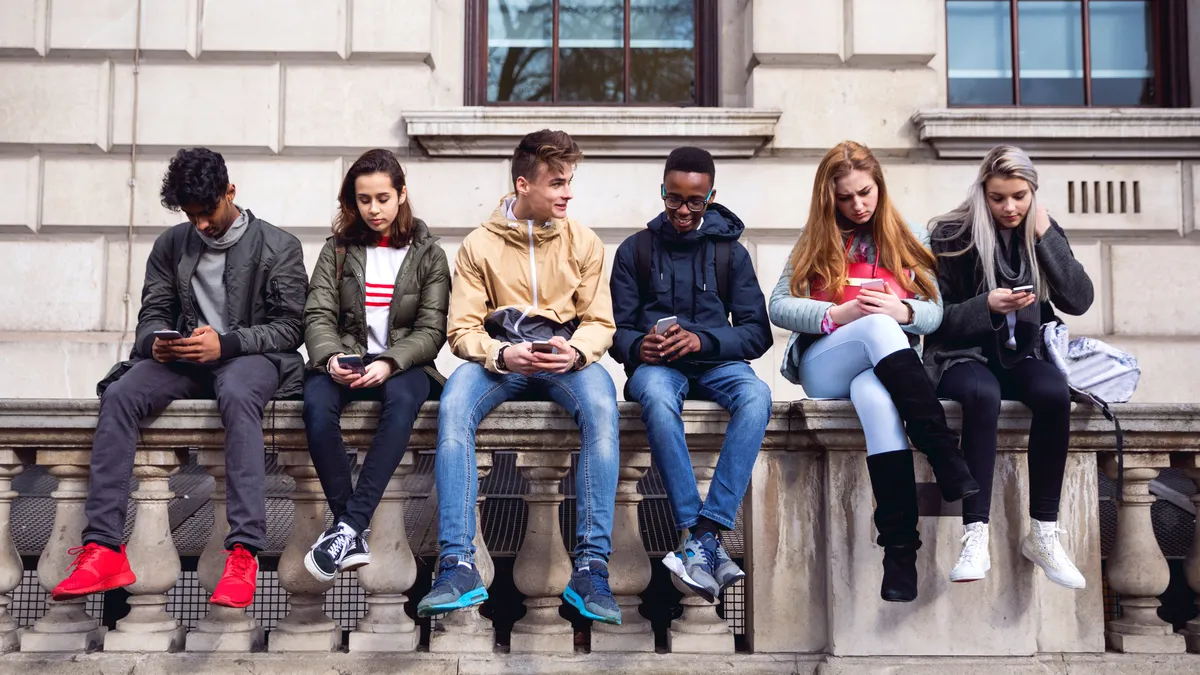Like much else in life, Halloween has been changed — maybe forever — by the pandemic.
COVID-19 wariness has done more than just alter the logistics of trick-or-treating or the number of costume parties. It changed the way the holiday, and others, are celebrated.
By fall of 2020, Halloween was a respite and escape from a year of angst and anguish — of closed schools, social distancing, runaway infection rates and previously unthinkable numbers of fatalities.
This year has brought relief in the form of vaccines, although the continued spread of COVID-19, as well as school quarantines and other headaches, continue to disrupt many lives. But certainly not at the same scale as last year — and this year it comes with Dr. Anthony Fauci's blessing, who encouraged vaccinated people to get outside to celebrate.
"I think what you're going to see this year is a return to normalcy," said Katie Thomas, who leads the Kearney Consumer Institute, an internal think tank at the consulting firm Kearney. "What we're hearing from consumers is that most people do feel much more comfortable this year. Because last year, we didn't even have the vaccines yet. So they feel more comfortable this year."
Against that backdrop, Halloween spending could reach an all-time high this year, according to research from the National Retail Federation and Prosper Insights and Analytics. They estimate spending on the holiday to hit $10.1 billion, up 26% from last year and up more than 15% over 2019 spending.
Planned celebrations are nearly back to 2019 levels, while shopping has started earlier. Spending on costumes, candy and greeting cards is all projected to hit marks above recent years, according to the NRF.
Coresight Research survey data shows that roughly 65% of respondents usually celebrate Halloween or have children that do, and there were more (15.7%) who said they plan to slightly increase spending versus those who said they would decrease (12%). However, those who plan to spend much less (9.7%) outnumbered those who planned to spend much more (6.4%).
Research from 1010data also shows that consumers are committing to Halloween earlier this year, a sign that they have more confidence in their plans. It could also signal the holiday is more of a staple than in years past for some consumers.
In August, sales of costumes were up 21% month over month, three percentage points higher than the monthly lift last year, according to 1010data. Candy sales were up 19%, compared to a double digit monthly decline in August 2020.
Astoundingly, sales of costumes for pets were up more than 4,000% in August (compared to a measly 298% last year). So don't be surprised to see four-legged pumpkins and ghosts haunting your neighborhood this year.
The NRF noted that last year's spike in households planning to decorate for Halloween — one way that consumers adapted to the holiday during the pandemic last year — has continued into this year. Spending on Halloween decorations is estimated to hit $3.2 billion, up more than 20% from last year.
Home Depot knows something about consumers' newfound fervor for Halloween decorations. The company in August sold out an early drop of a giant 12-foot tall decorative skeleton with a $300 price tag. Now the item is being sold on resale sites like eBay for much as three times the retail price.
"Decorations are still flying off the shelf," Thomas said. "You walk into Lowe's, Home Depot — it's Halloween everywhere. The mass merchandisers, the big-box stores, even Spirit Halloween now carries even more decor."
She added that decor, "is an area where we're still in that nostalgia moment that the pandemic sort of drove us into. All of us that are any age, from 30s and later, we're kind of thinking of times past and simpler times. I think that is a good sign for retailers — people really want to have fun with the holiday."
'Everybody wants to get in the mood'
All of the above is good for retailers generally. But who, specifically?
Like so many things in retail, Halloween is fragmented. It is, in part, served by a small but stable cadre of specialists, chief among them Spirit Halloween and Party City.
Spirit Halloween — owned by Spencer Gifts — counts more than 1,400 in its footprint. This year the retailer plans to hire 35,000 seasonal workers to staff its stores. That represents an increase over the 28,000 workers it has said in past years that it hires for the Halloween season.
Party City this year plans to open up to 100 Halloween City pop-ups this year. That effectively quadruples its Halloween City footprint from last year but is roughly 150 fewer pop-ups than it opened in 2019. Oddly, its staffing plans are short of last year's, when the company added more workers per store than in the past to meet its omnichannel needs during a season when the pandemic drastically reshaped shopping.
The rise in store count signals that Party City expects a partial return to in-store Halloween shopping. "People have figured out how to navigate indoor spaces," said Nikki Baird, vice president of innovation at retail tech company Aptos and former Forrester Research analyst. "There's a familiarity now, or almost a comfort level. 'If I wear my mask in the store, if my kids wear masks in the store, we can do those things.'"
Baird also notes that Halloween shopping can be a social activity compared to other kinds of buying, with friends and families trying on costumes for each other. "Everybody wants to get in the mood," she said.
According to Coresight, about 20% of surveyed Halloween shoppers in 2021 plan to shop from a specialized party goods or costume store.
That compares to 43% who plan to buy from a mass merchant or warehouse club. Halloween shoppers also said they would buy online (36%), at grocery stores (32.5%) and dollar stores (28%).
"This reflects that many consumers shopping for Halloween prioritize low prices and convenience," Coresight's Deborah Weinswig and Richard Marooney said in a report. At the same time, the specialist party and costume stores likely draw "the more dedicated cohort" of Halloween shoppers, according to Weinswig and Marooney.
According to 1010data, online sales at Amazon, Walmart and Target in key Halloween categories all increased month to month in August. Amazon had the largest increase at 10%, followed by Target (9%) and then Walmart (4%). If last year's trends hold this year, Target would have had its biggest Halloween lift in September, as its customers are returning to in-store shopping this year, according to 1010data.
Haunted by ghosts of Halloweens past
In the recent past, Party City has run into Halloween headwinds. Two years ago, the company reported a disastrous comparable sales decline for October 2019, which executives said was due to an unanticipated rise in e-commerce shopping. The sales declines implied the retailer's Halloween City unit lost market share over the season.
When a Halloween-focused retailer has a bad season, it takes another year for its next bite at the apple. Unfortunately for Party City, its next chance at Halloween was a holiday unlike any other the country had ever experienced. The COVID-19 surge during the fall of 2020 created a fog of uncertainty around how the holiday would play out leading up to it. It announced plans to open just 25 Halloween City pop-ups, roughly one-tenth the number for 2019, as it anticipated an avoidance of in-person shopping.
In the end, Party City's 2020 beat expectations with a Halloween that was roughly comparable to 2019. Which meant that it did not suffer further sales losses, but given that the previous year was a steep sales decline, the retailer missed out for another season on a chance to regain lost ground.
As for this year, Party City CEO Bradley Weston told analysts: "[W]e are well positioned for the upcoming Halloween season and are prepared for a variety of demand scenarios from an assortment and inventory perspective. Our teams are focused and we are excited about our refined marketing, improved go-to-market position and elevated omnichannel capabilities."
According to foot traffic analytics firm Placer.ai, Party City's traffic had been increasing even over 2019 in the summer months before declining again after a July peak, when the delta variant of COVID-19 began to surge.
Placer.ai Vice President of Marketing Ethan Chernofsky said that, with cases now declining, timing could work to the retailer's favor. "[T]he result could be a strong visit period for the chain in the coming months — especially considering limitations to the holiday season a year prior could drive pent up demand," Chernofsky said.
Baird suggested that digital-savvy mass sellers like Walmart, Target and Costco have taken on some costume sales while Home Depot and Lowe's have been picking off decor sales from specialists.
As with most categories, consumers learned to shop online for just about everything last year, and also chose mass merchants again and again as one-stop shops to limit their trips out in public. But the specialists also have a deep assortment and a store dedicated to the holiday for those who like it the most.
"That whole pop-up angle to Halloween is set," Baird said. Halloween specialists "were doing doing pop-ups before pop-ups were part of the retail vernacular. That part is done and established, and other retailers that are looking at a pop-up strategy would do well to look at how well these companies execute this now."




















